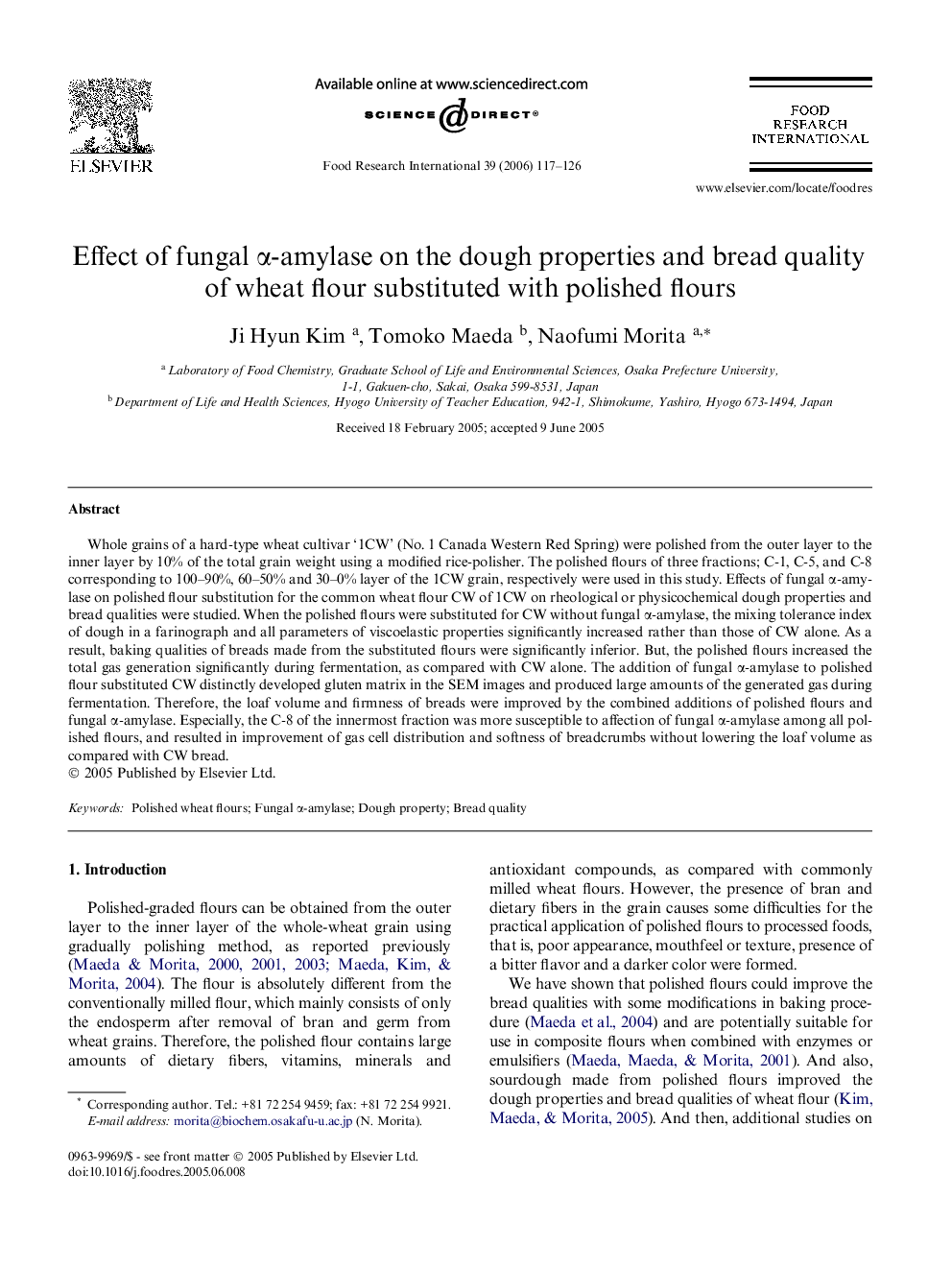| Article ID | Journal | Published Year | Pages | File Type |
|---|---|---|---|---|
| 4563237 | Food Research International | 2006 | 10 Pages |
Whole grains of a hard-type wheat cultivar ‘1CW’ (No. 1 Canada Western Red Spring) were polished from the outer layer to the inner layer by 10% of the total grain weight using a modified rice-polisher. The polished flours of three fractions; C-1, C-5, and C-8 corresponding to 100–90%, 60–50% and 30–0% layer of the 1CW grain, respectively were used in this study. Effects of fungal α-amylase on polished flour substitution for the common wheat flour CW of 1CW on rheological or physicochemical dough properties and bread qualities were studied. When the polished flours were substituted for CW without fungal α-amylase, the mixing tolerance index of dough in a farinograph and all parameters of viscoelastic properties significantly increased rather than those of CW alone. As a result, baking qualities of breads made from the substituted flours were significantly inferior. But, the polished flours increased the total gas generation significantly during fermentation, as compared with CW alone. The addition of fungal α-amylase to polished flour substituted CW distinctly developed gluten matrix in the SEM images and produced large amounts of the generated gas during fermentation. Therefore, the loaf volume and firmness of breads were improved by the combined additions of polished flours and fungal α-amylase. Especially, the C-8 of the innermost fraction was more susceptible to affection of fungal α-amylase among all polished flours, and resulted in improvement of gas cell distribution and softness of breadcrumbs without lowering the loaf volume as compared with CW bread.
